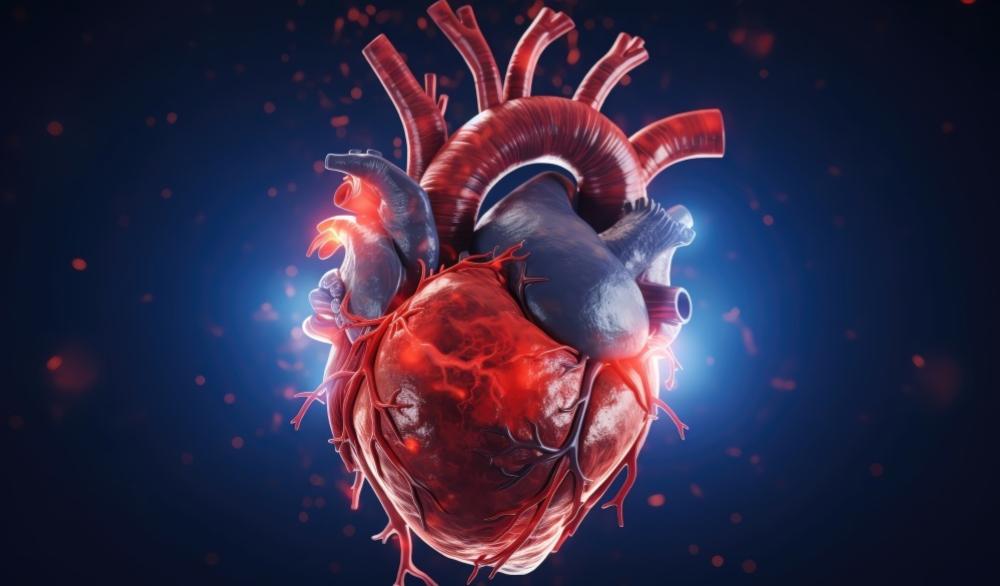The Role of Cardiac Stem Cells in Heart Repair

Heart disease is a major health issue and affects millions of people each year. According to the Centers for Disease Control (CDC), heart disease kills one person every 33 seconds in the United States and is the leading cause of death for men and women across most racial and ethnic groups.
However, there is hope. Traditional treatments (medication, lifestyle changes, and surgery) can help patients manage symptoms and slow the progress of heart disease. But what about after a heart-related event? Unfortunately, they don’t help when it comes to repairing damaged heart tissue.
Cardiac stem cells promise to change that situation. These cells have considerable potential when it comes to heart regeneration and healing. However, understanding how they work and finding the best sources for cardiac therapy can be challenging.
What’s the Role of Cardiac Stem Cells in Myocardial Repair?
Cardiac stem cells are found within the heart and have specific properties. They can self-renew (divide to make more stem cells) and differentiate into cardiomyocytes (the cells within the muscles that make your heart contract) for myocardial repair.
Myocardial repair is all about replacing or regenerating damaged heart tissue. That’s especially true after events like a heart attack, where parts of the heart muscle might die due to a lack of blood flow.
Cardiac stem cells transform into new heart cells, replacing the damaged ones. They also help improve overall heart function by releasing growth factors that encourage the repair process.
Another benefit is that they promote angiogenesis (the formation of new blood vessels) to restore blood flow. Plus, cardiac stem cells help reduce inflammation, making it easier for tissue to heal and regenerate.
What’s the Role of Stem Cells in Heart Disease?
Heart diseases like heart attacks and heart failure cause major damage to your heart tissue. That makes it difficult for the heart to function properly. Once heart cells are lost, your body often can’t regenerate them. Stem cell therapy could make a huge difference in this situation.
Stem cells can help regenerate and repair damaged heart tissue by replacing dead or malfunctioning cells with new, healthy ones. Researchers are looking at various ways to introduce these cells into the heart, like direct injection into the damaged area or using scaffolds to help the cells grow where they’re needed.
Clinical trials and studies are currently underway to see how well these therapies work. Some already show positive results, like improved heart function and reduced scar tissue.
What’s the Best Source of Stem Cells for Cardiac Regeneration Therapy?
When it comes to cardiac regeneration, researchers are studying several types of stem cells. Of course, each has its own pros and cons:
- Embryonic Stem Cells (ESCs): These cells can turn into any type of cell, so they’re highly versatile. However, ethical concerns and the risk of tumor formation mean they have limited use in cardiac therapy.
- Induced Pluripotent Stem Cells (iPSCs): iPSCs are created by reprogramming adult cells to act like embryonic stem cells. They provide patient-specific therapy, which reduces the risk of rejection.
- Mesenchymal Stem Cells (MSCs): MSCs are easier to harvest, especially from bone marrow or fat tissue, and because they’re patient-specific, there’s less risk of rejection. They also reduce inflammation and accelerate healing. However, they have limited ability to turn into cardiomyocytes, which can affect performance.
- Cardiac Stem Cells (CSCs): These cells are naturally found in the heart and transform into heart-specific cells more easily. While they’re promising, harvesting enough and scaling up for therapy are major challenges.
So, which type is best? While iPSCs and CSCs offer specific benefits for heart therapy, MSCs are more accessible. Each type has its own considerations when it comes to safety, availability, and effectiveness.
How Do Stem Cells Help Repair the Heart?
Stem cells improve heart repair in several ways. One is by transforming into new heart cells that replace damaged ones.
Additionally, they play an important role in what’s called the paracrine effect. This involves releasing different factors that stimulate tissue repair and regeneration without actually becoming new cells. Those factors can reduc/e inflammation, encourage new blood vessel growth, and activate your body’s natural healing processes.
Challenges for Stem Cell Therapy
One of the biggest challenges right now is getting the transplanted stem cells to survive and integrate with the existing heart tissue. The heart—especially after injury—isn’t a welcoming place. It’s hard for new cells to take hold and even harder for the body to accept them. Even if the cells survive, they still have to connect with the heart’s electrical system. Without the necessary electrical coupling, the cells can’t sync with the heart’s natural rhythm.
These hurdles aren’t being ignored. Researchers are running clinical trials to figure out what kind of stem cells work best, how to deliver them safely, and how to reduce the overall risks involved. They are also working on solutions like using bioengineered supportive scaffolds or gene editing to enhance performance. Progress is being made on several fronts, and each study gets us a little closer to making stem cell therapy a regular part of cardiac care.
That said, many patients who have had stem cell treatments have already reported real improvements—less fatigue, easier breathing, and better overall quality of life. There’s also early evidence that this therapy may reduce the risk of heart failure after a heart attack.
Stem cell therapy isn’t a cure all—not yet—but it’s pointing us in the right direction. As research continues we may soon see a future where the heart can do what once seemed impossible: heal itself.
Conclusion
Cardiac stem cells are opening up new possibilities for treating heart disease by helping regenerate and repair damaged tissue in ways traditional therapies simply can’t. Although there are still challenges, like cell survival and proper integration, progress is promising.
Future techniques and technologies like bioengineering and gene editing could unlock the full potential of stem cell therapies, offering hope for people dealing with heart conditions. With cardiac stem cells, there’s a chance for your heart to heal itself, leading to better outcomes and a healthier future.


